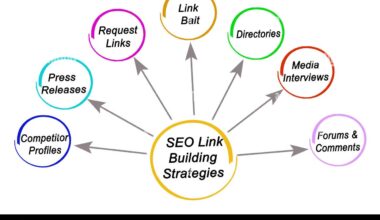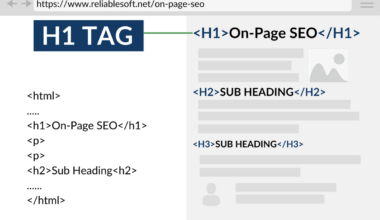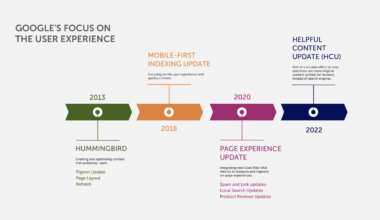What is the People Also Ask (PAA) box?
The People Also Ask (PAA) box is a prominent feature in Google’s search results. It appears as a box that contains a list of questions related to the user’s search query. When a user clicks on one of the questions, it expands to show a brief answer and a link to the source.
The PAA box is a dynamic feature that changes as the user clicks on questions. As a result, the box may contain different questions and answers for different users, even if they search for the same keyword. This makes the PAA box a valuable tool for users who want to explore related topics and find more information about their search query.
For SEO professionals, the PAA box presents an opportunity to increase their visibility and attract more traffic to their website. By optimizing their content for PAA questions, they can appear in the PAA box and attract clicks from interested users.
However, optimizing for the PAA box requires careful research and planning. SEO professionals must understand the types of questions that appear in the PAA box, the sources that Google uses to generate answers, and the factors that influence the selection of answers.
In the following sections, we will explore these topics in more detail and provide tips for optimizing your content for the PAA box.
Why is the PAA box important for SEO?
The PAA box is an important feature for SEO because it offers a unique opportunity to increase visibility and attract traffic to your website. Here are some reasons why the PAA box is important for SEO:
1. Increased visibility:
When your content appears in the PAA box, it is displayed prominently at the top of the search results page. This increases your visibility and makes it more likely that users will click through to your website.
2. Improved click-through rates:
The PAA box provides users with quick answers to their questions, which can lead to higher click-through rates. If your content appears in the PAA box, users are more likely to click on your link and visit your website.
3. Enhanced credibility:
When your content appears in the PAA box, it is seen as a credible source of information by Google and users. This can enhance your credibility and reputation in your industry.
4. Increased website traffic:
If your content appears in the PAA box, it can attract more traffic to your website. This can lead to more leads, conversions, and sales for your business.
However, optimizing for the PAA box requires careful research and planning. SEO professionals must understand the types of questions that appear in the PAA box, the sources that Google uses to generate answers, and the factors that influence the selection of answers.
In the next section, we will explore how to research PAA questions for optimization.
How to research PAA questions for optimization?
Researching PAA questions is an essential step in optimizing your content for the PAA box. Here are some tips for researching PAA questions:
1. Keyword research:
Keyword research is the foundation of any SEO strategy. To research PAA questions, start by identifying the primary keywords related to your content. Use a keyword research tool like
Google Keyword Planner
to generate a list of related keywords and phrases.
2. Analyze the PAA box:
Search for your primary keyword on Google and analyze the PAA box. Take note of the questions that appear in the PAA box and the answers provided. This will give you an idea of the type of questions that Google associates with your keyword.
3. Use Answer the Public:
Answer the Public is a free tool that generates a list of questions related to your keyword. Enter your primary keyword on the website and select your country and language. The tool will generate a list of questions related to your keyword that you can use for optimization.
4. Use Google’s “Searches related to” feature:
Scroll down to the bottom of the search results page and look for the “Searches related to” section. This section contains a list of related keywords and phrases that you can use for optimization.
5. Use Google Trends:
Google Trends is a free tool that allows you to see the popularity of a keyword over time. Use the tool to identify trending topics related to your keyword and create content around those topics.
By using these tips, you can identify the questions that users are asking related to your keyword and create content that answers those questions. This will increase your chances of appearing in the PAA box and attracting more traffic to your website.
In the next section, we will provide tips for optimizing your content for the PAA box.
Tips for optimizing content for the PAA box
Optimizing your content for the PAA box requires a strategic approach. Here are some tips for optimizing your content for the PAA box:
1. Answer the question concisely:
When optimizing your content for the PAA box, it’s essential to answer the question concisely. Google prefers short, direct answers that provide users with the information they need quickly. Use clear and simple language to answer the question and avoid using jargon or technical terms.
2. Provide additional context:
While it’s important to answer the question directly, providing additional context can help users understand the topic better. Use examples, statistics, or links to relevant resources to provide additional context where necessary.
3. Use structured data:
Structured data is a type of code that helps search engines understand the content on your website better. By using structured data to mark up your content, you can help Google identify the most relevant information to display in the PAA box.
4. Optimize for related keywords:
Optimizing your content for related keywords can help increase your chances of appearing in the PAA box. Use keyword research tools to identify related keywords and phrases and incorporate them into your content where appropriate.
5. Use lists and tables:
Lists and tables are great ways to present information in a concise and easy-to-read format. Use HTML lists and tables to organize your content and make it more attractive to users and search engines.
6. Focus on user experience:
Ultimately, the PAA box is designed to provide users with the best possible experience. When optimizing your content for the PAA box, focus on providing valuable information that meets the user’s needs. This will increase your chances of appearing in the PAA box and attracting more traffic to your website.
By following these tips, you can optimize your content for the PAA box and increase your visibility and credibility in search results. In the next section, we will explore how to measure the success of your PAA optimization efforts.
Measuring the success of PAA optimization
Measuring the success of your PAA optimization efforts is essential to determine the effectiveness of your strategy and make adjustments where necessary. Here are some ways to measure the success of your PAA optimization:
1. Use Google Search Console:
Google Search Console is a free tool that provides valuable insights into your website’s performance in search results. Use the Performance report in Search Console to track the number of clicks, impressions, and click-through rates for your content in the PAA box.
2. Monitor your website traffic:
Use Google Analytics or other website analytics tools to monitor your website traffic. Track the number of sessions, pageviews, and bounce rate for pages that appear in the PAA box. This will give you an idea of how much traffic you’re getting from the PAA box.
3. Track rankings:
Track your rankings for keywords associated with PAA questions. Use a keyword research tool like
Moz Explorer
to track your rankings over time. If your rankings improve for keywords associated with PAA questions, it’s a good sign that your optimization efforts are working.
4. Analyze user behavior:
Use heat map tools like
Crazy Egg
or
Hotjar
to analyze user behavior on pages that appear in the PAA box. This will give you an idea of how users interact with your content and whether they find it useful.
5. Analyze the competition:
Analyze your competitors’ content that appears in the PAA box. Look for similarities and differences between your content and theirs. This will give you an idea of where you need to improve and how you can differentiate your content from the competition.
By using these methods to measure the success of your PAA optimization efforts, you can determine the effectiveness of your strategy and make adjustments where necessary. Remember to track your progress over time and continue to optimize your content for the PAA box.
In the final section, we will discuss the future of the PAA box and SEO.
Final thought: The future of PAA and SEO
As search engines continue to evolve and improve their algorithms, it’s clear that the PAA box will play an increasingly important role in SEO. Here are some trends and predictions for the future of the PAA box and SEO:
1. More personalized results:
As search engines gather more data about users and their search behaviors, we can expect to see more personalized results in the PAA box. This means that the questions and answers displayed in the box may vary depending on the user’s location, search history, and other factors.
2. Greater emphasis on voice search:
With the rise of voice assistants and smart speakers, voice search is becoming increasingly popular. As a result, we can expect to see more questions and answers designed for voice search in the PAA box.
3. More visual content:
Search engines are increasingly incorporating visual content into search results. We can expect to see more images, videos, and infographics in the PAA box in the future.
4. Greater focus on quality content:
As search engines continue to prioritize high-quality content, we can expect to see more emphasis on the quality of the content that appears in the PAA box. This means that websites with well-researched, informative, and engaging content will have a better chance of appearing in the PAA box.
5. Increased competition:
As more websites and businesses optimize their content for the PAA box, we can expect to see increased competition for visibility in the box. This means that SEO professionals will need to continue to refine their strategies and stay up-to-date with the latest trends and best practices.
In conclusion, the PAA box is a valuable tool for SEO professionals and businesses looking to increase their visibility and attract more traffic to their website. By understanding how the PAA box works, researching PAA questions, and optimizing content for the box, you can improve your chances of appearing in the box and attracting more clicks from interested users. As search engines continue to evolve and improve, it’s clear that the PAA box will play an increasingly important role in SEO. By staying up-to-date with the latest trends and best practices, you can continue to optimize your content for the PAA box and stay ahead of the competition.






















